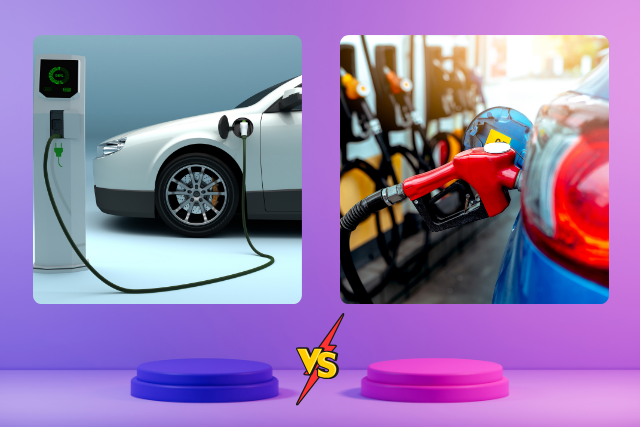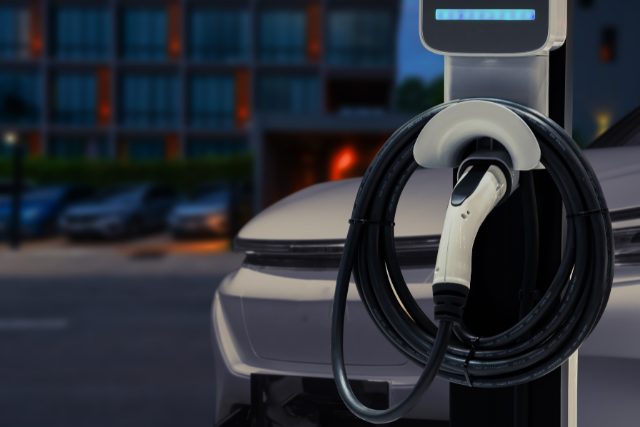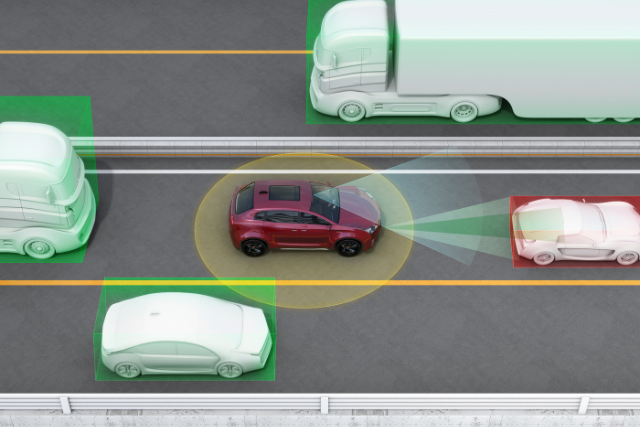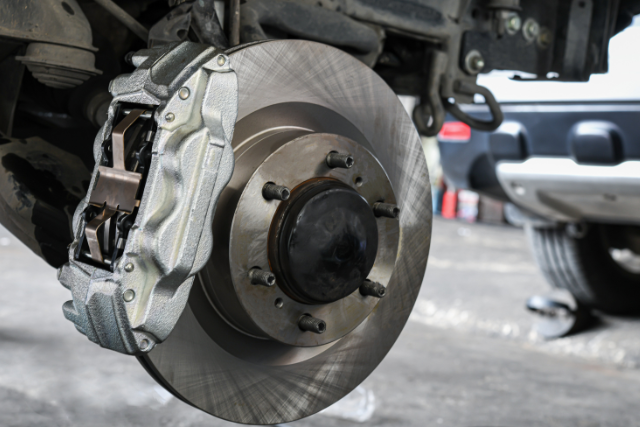The debate over the safety of electric vehicles (EVs) versus traditional gasoline cars is becoming increasingly relevant as more people consider switching to electric.
Both EVs and gasoline cars offer unique safety benefits and potential risks. This article will compare the safety features, focusing on structural integrity, fire hazards, advanced safety technologies, environmental impacts, and maintenance needs.
Structural Safety
Electric Vehicles
Battery Placement and Stability
Electric vehicles typically have their batteries placed low in the chassis, which lowers the centre of gravity and enhances stability. This design reduces the risk of rollover accidents, making EVs structurally safer in many scenarios.
Advanced Materials
Many EVs use high-strength materials like aluminium and carbon fibre composites, providing superior crash protection. For example, the Tesla Model 3 has received top safety ratings due to its robust construction.
Gasoline Cars
Traditional Design
Gasoline cars have engines at the front, affecting weight distribution and stability. While modern gas cars are designed with crash safety in mind, their higher centre of gravity than EVs can be a disadvantage in certain collisions.
Proven Safety Features
Gasoline cars have benefited from decades of safety innovation, including crumple zones, reinforced frames, and advanced airbags. Vehicles like the Toyota Camry are renowned for their reliability and safety in crash tests.
Fire Risk
Electric Vehicles
Battery Fires
One of the primary concerns with EVs is the risk of battery fires. While rare, lithium-ion batteries can catch fire if damaged or improperly managed. However, manufacturers have implemented rigorous safety measures, such as thermal management systems, to mitigate this risk.
Fire Resistance
Electric vehicles are designed with fire-resistant materials and multiple layers of protection around the battery pack. These features help prevent fires from spreading, enhancing overall safety.
Gasoline Cars
Fuel Fires
Gasoline cars are also susceptible to fires, primarily from fuel leaks or collisions. However, the risk is generally well-understood, and safety systems like fuel cut-off mechanisms and fire-retardant materials are standard features.
Historical Data
Statistically, gasoline cars have a higher incidence of fires than electric vehicles. Still, they also benefit from extensive fire safety research and regulations that have improved their safety over time.
Advanced Safety Features
Electric Vehicles
Advanced Driver Assistance Systems (ADAS)
Many electric vehicles have cutting-edge ADAS, including automatic emergency braking, lane-keeping assist, and adaptive cruise control. These systems, such as Tesla’s Autopilot and Nissan’s ProPILOT Assist, are designed to prevent accidents and enhance driver safety.
Over-the-Air Updates
EV manufacturers can deploy over-the-air software updates to improve vehicle safety features and performance, ensuring that the latest safety enhancements are always available to drivers.
Gasoline Cars
Established Technologies
Gasoline cars also feature advanced safety technologies, although they may not always be as integrated or updated as frequently as those in EVs. Systems like Toyota Safety Sense and Honda Sensing provide comprehensive safety features that rival many electric vehicles.
Reliability
The long history of gasoline cars means that their safety technologies are tried and tested, offering high reliability and driver confidence.
Environmental and Health Impact
Electric Vehicles
Zero Emissions
Electric vehicles produce no tailpipe emissions, which reduces air pollution and associated health risks. This environmental benefit translates to safer, cleaner air for everyone, particularly in urban areas.
Noise Pollution
EVs are quieter than gasoline cars, reducing noise pollution and creating a more pleasant and safer urban environment.
Gasoline Cars
Emissions
Gasoline cars emit pollutants that can harm human health and the environment. While modern engines are cleaner than ever, they still produce carbon dioxide, nitrogen oxides, and other harmful gases.
Noise
Gasoline engines are noisier than electric motors, contributing to noise pollution, which can negatively impact the quality of life and increase stress levels.
Maintenance and Longevity
Electric Vehicles
Fewer Moving Parts
Electric vehicles have fewer moving parts than gasoline cars, leading to less wear and tear and lower maintenance costs. This simplicity can also translate to fewer mechanical failures and associated safety risks.
Battery Lifespan
While the lifespan of EV batteries is a concern, advancements in battery technology are extending their longevity. Manufacturers typically offer long battery warranties, providing consumers peace of mind.
Gasoline Cars
Established Maintenance Practices
Gasoline cars benefit from a well-established network of maintenance and repair services. Regular maintenance is crucial for safety, and extensive experience with gasoline engines ensures reliable service.
Potential for Wear and Tear
The complexity of gasoline engines means more parts can fail, potentially leading to safety issues if not properly maintained. Regular servicing is essential to keep these vehicles operating safely.
Conclusion
Weighing the Safety Factors
Both electric and gasoline cars have their unique safety features and potential risks. Electric vehicles offer advantages in structural safety, advanced driver assistance systems, and environmental benefits.
However, concerns about battery fires and the relative newness of the technology are important considerations.
On the other hand, gasoline cars benefit from decades of safety innovations and reliable maintenance practices but face emissions and noise pollution challenges.
Making an Informed Choice
When choosing between an electric and a gasoline car, consider your priorities: Are you looking for the latest in safety technology and environmental benefits, or do you prefer gasoline vehicles’ familiarity and established reliability?
By understanding the safety features and potential risks, you can decide to suit your needs best and ensure peace of mind on the road.







